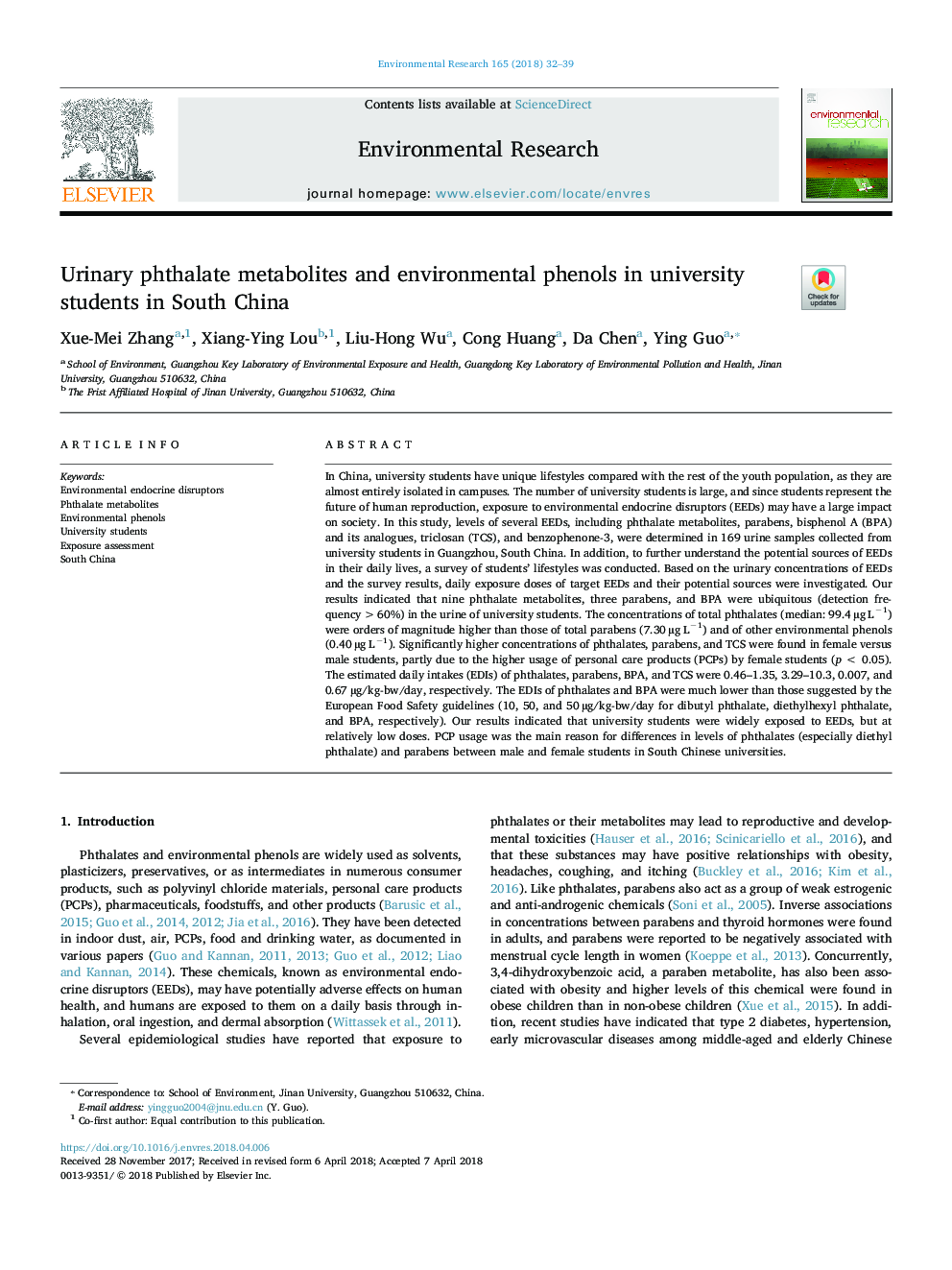| کد مقاله | کد نشریه | سال انتشار | مقاله انگلیسی | نسخه تمام متن |
|---|---|---|---|---|
| 8868855 | 1622538 | 2018 | 8 صفحه PDF | دانلود رایگان |
عنوان انگلیسی مقاله ISI
Urinary phthalate metabolites and environmental phenols in university students in South China
ترجمه فارسی عنوان
متابولیت های فتالات ادرار و فنول های محیطی در دانشجویان دانشگاه جنوبی چین
دانلود مقاله + سفارش ترجمه
دانلود مقاله ISI انگلیسی
رایگان برای ایرانیان
کلمات کلیدی
آسیب های محیطی غدد درون ریز، متابولیت های فتالات فنول های محیطی، دانشجویان دانشگاه، ارزیابی قرار گرفتن در معرض، جنوب چین،
موضوعات مرتبط
علوم زیستی و بیوفناوری
علوم محیط زیست
بهداشت، سم شناسی و جهش زایی
چکیده انگلیسی
In China, university students have unique lifestyles compared with the rest of the youth population, as they are almost entirely isolated in campuses. The number of university students is large, and since students represent the future of human reproduction, exposure to environmental endocrine disruptors (EEDs) may have a large impact on society. In this study, levels of several EEDs, including phthalate metabolites, parabens, bisphenol A (BPA) and its analogues, triclosan (TCS), and benzophenone-3, were determined in 169 urine samples collected from university students in Guangzhou, South China. In addition, to further understand the potential sources of EEDs in their daily lives, a survey of students' lifestyles was conducted. Based on the urinary concentrations of EEDs and the survey results, daily exposure doses of target EEDs and their potential sources were investigated. Our results indicated that nine phthalate metabolites, three parabens, and BPA were ubiquitous (detection frequency > 60%) in the urine of university students. The concentrations of total phthalates (median: 99.4â¯Âµgâ¯Lâ1) were orders of magnitude higher than those of total parabens (7.30â¯Âµgâ¯Lâ1) and of other environmental phenols (0.40â¯Âµgâ¯Lâ1). Significantly higher concentrations of phthalates, parabens, and TCS were found in female versus male students, partly due to the higher usage of personal care products (PCPs) by female students (pâ¯<â¯0.05). The estimated daily intakes (EDIs) of phthalates, parabens, BPA, and TCS were 0.46-1.35, 3.29-10.3, 0.007, and 0.67â¯Âµg/kg-bw/day, respectively. The EDIs of phthalates and BPA were much lower than those suggested by the European Food Safety guidelines (10, 50, and 50â¯Âµg/kg-bw/day for dibutyl phthalate, diethylhexyl phthalate, and BPA, respectively). Our results indicated that university students were widely exposed to EEDs, but at relatively low doses. PCP usage was the main reason for differences in levels of phthalates (especially diethyl phthalate) and parabens between male and female students in South Chinese universities.
ناشر
Database: Elsevier - ScienceDirect (ساینس دایرکت)
Journal: Environmental Research - Volume 165, August 2018, Pages 32-39
Journal: Environmental Research - Volume 165, August 2018, Pages 32-39
نویسندگان
Xue-Mei Zhang, Xiang-Ying Lou, Liu-Hong Wu, Cong Huang, Da Chen, Ying Guo,
